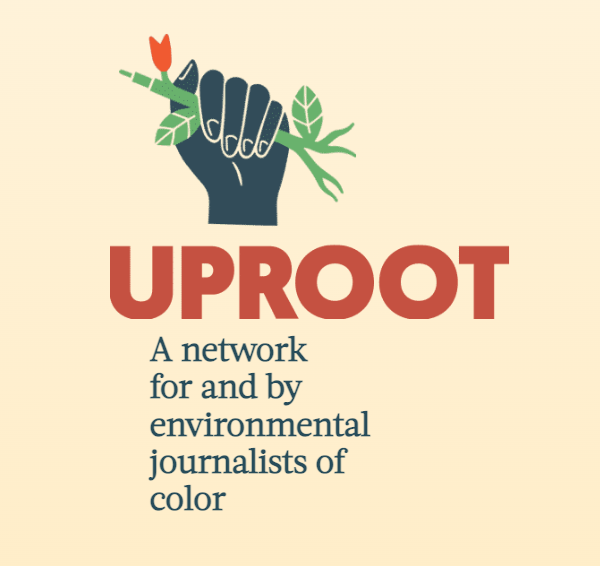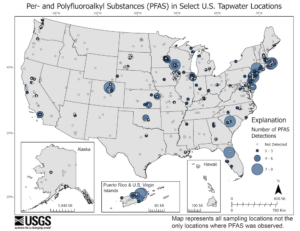
Evidence has shown that underserved neighborhoods and people of color are disproportionately affected by climate change, extreme heat and environmental inequalities.
However, mainstream climate and environmental news coverage often overlooks the most impacted communities. Now, a group of journalists of color is actively working to change the status quo through the Uproot Project, a growing network of journalists of color focused on the environment and climate change in communities hit hardest by the crisis.
“Communities that are most impacted by the environment, climate change, natural disaster, are typically communities that are underrepresented and are communities of color,” said Lucia Priselac, director of the Uproot Project. When the stories are being reported they are not being reported from the perspective of someone in that community. You don’t get all of the nuances and the true devastation of that community.”
More on the growing network
The Uproot Project, officially launched in 2021, aims to address that coverage gap by supporting journalists of color who have been underrepresented in the field of climate change and the environment, and to bring new perspectives and spotlight environmental justice stories.
“Environmental journalism has long upheld incomplete and white-dominated narratives about your planet. We want to change that and invite a generation of new voices to make the beat their own,” the Uproot Project explains on its website.
The group comes at the right time with the growing climate crisis and communities in turmoil over extreme heat, weather and environmental pollution
A Princeton University study published in 2020 found that low-income people, mainly people of color, are on the frontlines of climate change impact. For example, African-Americans are 75% more likely than white people to live in areas near commercial sites that produce toxic noise, odors and emissions. And ocean acidification is a process that hurts natural plant and animal life, impacting people who rely on the ocean for food, such as Native Americans who live along the coast, according to the study.
Similarly, in 2021, the U.S. Environmental Protection Agency released a report that found climate change disproportionately impacts underserved communities. The EPA found that 34% of African Americans were more likely to live in areas with the highest potential for childhood asthma than other groups. It also found that extreme temperatures significantly impact Latinos because they tend to work in outdoor industries like construction and agriculture.
“The impacts of climate change that we are feeling today, from extreme heat to flooding to severe storms, are expected to get worse, and people least able to prepare and cope are disproportionately exposed,” said EPA Administrator Michael S. Regan.. “This report punctuates the urgency of equitable action on climate change.”
Besides climate change impacts, a majority of communities of color are overloaded with a disproportionate number of toxic polluters such as highways, garbage dumps, recycling facilities and other sites that produce environmental pollutants. The increased exposure to harmful substances and pollution leads to a higher-than-average risk of chronic illnesses and cancer. In 2018, research by five scientists at the U.S. Environmental Protection Agency found the environmental health burden is 28% higher for people of color because they tend to live closer to pollution centers.
Engaging journalists of color in the climate and environment space means more of these equity and health issues will get attention, Priselac said.
“Our big goal and purpose is bringing more diverse voices to the forefront of environmental coverage,” she said.
Uprooting the old narrative
The organization was born out of a meeting in 2019 among a handful of environment and climate change journalists of color invited to Seattle by Grist, a nonprofit news site focused on climate coverage. The question for the group: did they and others like them need support in covering the environment and climate?
The answer was the Uproot Project, named after the goal of uprooting the old narrative around environmental journalism.
After that first meeting, the project became a full-fledged organization focused on support, tools and training for journalists covering all aspects of climate change. Uproot is funded by Grist but has plans to become independent in the future. It was inspired by the Ida B. Wells Society, which focuses on increasing the number of investigative reporters and editors of color.
“We wanted to have a candid conversation that environment journalists of color are facing in the field of environmental journalism,” Priselac said “And through that this group of journalists and Grist realized we needed to have a place where we can collect and leverage resources and bring diverse voices to the forefront of environmental journalism.”
One of those challenges for many reporters is getting their outlets and editors to see communities at the center of environmental reporting as deserving of more nuanced and intentional coverage. To recognize and document the lasting impact a natural disaster or environmental hazard will have on communities and give reporters the support to cover those.
Besides being a network for like-minded journalists of color, Uproot also offers trainings, a year-long funded fellowship for journalists to work on projects, mentors and a biweekly newsletter called The Seedling.
Uproot has also partnered with the Society of Environmental Journalists to help pay for a select number of members to attend the Society’s annual conference, which takes place next week in Boise, Idaho. This is the second year the nonprofits have partnered to increase diversity in the field.
So far, the organization has approximately 300 members, including freelancers, staff writers and editors from outlets like ProPublica, Vox, Atmos, Grist and the Los Angeles Times.
Uproot member stories
- Grist: “Any way the wind blows” by Naveena Sivam
- Atmos: “Where is the end of Hawai’i’s water crisis?” by Amber X. Chen
- Environmental Health News: “California’s new pesticide notification system aims to protect public health. Will it work?” by Zaydee Sanchez








